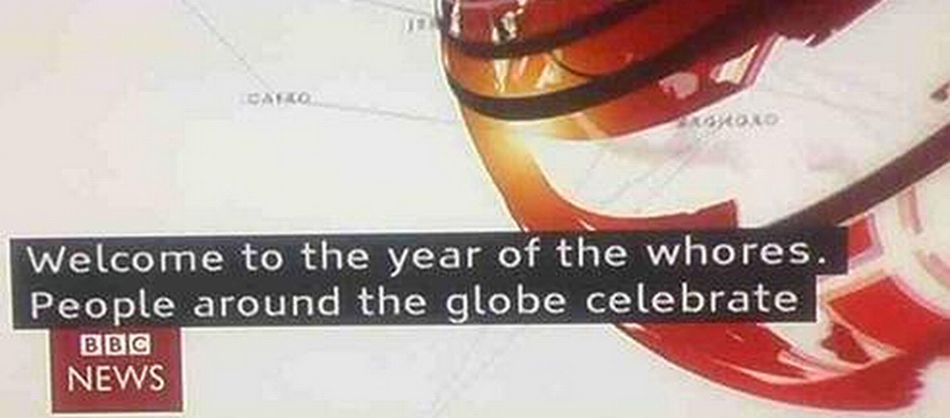1. Space - subtitles are restricted by the amount of space available on the screen. English subtitles are generally restricted to two lines of text, with between 32 and 40 characters per line (including spaces and punctuation). That is an average of about 7 to 8 words per line maximum. To try and save space, subtitlers often use shorter synonyms. That is why if you hear "difícil" in a Spanish-language movie, you may hear the word "hard" instead of the word "difficult". This doesn't always happen, and where we can, we use a similar word, but this is a common space-saving technique.
2. Time - closely related to the above point is the restriction of time. Most people generally read (mentally) a text slower than a person can speak in normal conversation. People can comfortably maintain a speech rate of about 250-300 words per minute without it seeming fast or hurried. Recommended reading rates for English subtitles average about 180 words per minute. For that reason, it is often necessary to reduce the spoken text when converting it into subtitles. To do this, subtitlers have to make choices about what information to keep and what can be discarded or omitted. Techniques include using shorter synonyms, as above, paraphrasing, turning negatives into positive (I didn't remember > I forgot), changing grammar to shorter forms (John was attacked by James > James attacked John), and omitting some information completely.
3. Word-for-word translations don't exist - very rarely do translators or subtitlers translate a text or film word-for-word. This doesn't mean a translation is inaccurate. Translators tend to adapt the text to language which is more common or more easily understood in the target language. For example, in Spain many people answer the telephone by saying "Diga" or "Dígame", which literally means "Tell" or "Tell me". People in English speaking countries don't normally answer the phone like this, so in this case you would probably see this subtitled as "Hello?". Similarly, when someone is hungry, in Spanish someone would say "Tengo hambre" which literally means "I have hunger", which is a grammatically correct and easily understandable sentence in English. But when is the last time you heard a native English speaker say "I have hunger"? A more appropriate translation in this case would be "I'm hungry".
4. Subtitles are a valuable literacy tool - it has been argued (and I agree completely) that subtitles act as a very useful literacy tool, especially in countries with high illiteracy rates and poor access to education. For this reason, subtitles should not recreate non-standard forms of speech, such as "cos" for "because" or "I ain't going" for "I'm not going". Films such as "East is East" are full of non-standard language use and this kind of language is generally "corrected" to more standard forms of speech. Only when a character's non-standard speech is a defining feature of their character or when a character's speech differentiates them greatly from the other characters are these non-standard forms maintained; for example, to show that a character comes from a different area to where the film is set, or to show that a particular character is "less intelligent" or "uneducated".
5. Swearing is often toned down - it has also been argued that swearing has a greater impact or shock value when it is read than when it is heard. As subtitling involves the change of medium from a verbal to a written one, swearing in films is often toned down when converted into foreign subtitles. So the word "Joder!" (literally "to fuck"), which is often used to express anger or frustration, may be toned down to "Damn!" or "Shit!" when subtitled in English, which I think most people would agree are less strong or offensive than the word "fuck", even though the latter is also equally used in English to express anger or frustration. Also, swearing is not always crucial to understanding meaning, and when time and space is restricted, swearing is one of the first things to go. The debate on whether to tone down profanities or not is a heated debate. I am all for maintaining where possible the language and strength of the original, but not everyone agrees.
6. Humour! - probably one of the most difficult things to translate in any language is humour. Some jokes do cross international boundaries, but many don't. This is especially so when jokes revolve around puns or pronunciation of words. For example, I came across this joke in a Spanish TV series: "Ese no sabe distinguir
un Zurbarán de un zurullo." This joke plays on the pronunciation of Zurburán (a Spanish painter) and zurullo (a turd). For this reason, jokes are often changed completely. The challenge is finding a joke which is as closely related as possible to the original, or includes some of the same words.
7. Cultural differences - the hidden meaning or connotations a word has differs from country to country and language to language. In my experience, it is much more common to use words which denote a person's skin colour in Spanish-speaking countries than it is in English-speaking countries. In English, skin colour is often a very taboo subject, whereas here in my current home of Colombia it is normal, acceptable, and not considered offensive to refer to a person's physical appearance, which includes things like hair, eye and skin colour, height, size and build. These kinds of words are also often used as terms of endearment in Spanish. Therefore, references to physical appearance may be toned down, altered or even omitted and replaced with a more acceptable term of endearment, unless the speaker is specifically using skin colour to offend someone.
8. Idioms - closely related to humour is the use of idioms and colloquial expressions. Sometimes, you can use the same one in English, more often than not you can't. I recently came across this beauty in a Spanish TV series: "Empezar la casa por el tejado" (literally, to begin the house with the roof), meaning to do or start things in the wrong order. No direct equivalent exists in English, at least to my knowledge.
9. Grammatical differences - if you look at the conjugation of Spanish and English verbs, you will see we share many of the same verb tenses and aspects. However, they are often used very differently. A Spanish speaker could easily say "Nunca fui a Inglaterra", meaning they have never visited England. In English, we wouldn't say "I never went to England" to say that you had never visited England in your life. It would be more normal to hear "I have never been to England". So although a direct translation of "Nunca fui" is "I never went", we wouldn't use this translation.
10. Translation workflows - believe it or not, if you are watching a non-English film (e.g. Vietnamese) with non-English subtitles (e.g. Norwegian), the person who created the Norwegian subtitles for the Vietnamese film may not even speak Vietnamese! You might think this is ridiculous but this is because of the workflow involved in translating a film into various languages at once. Think about how many Norwegian people are likely to speak Vietnamese; therein lies the problem. Then, how many of those people know how to translate and know how to produce subtitles? Even less. In many cases like this, an English-language template is created from the Vietnamese script, and a Norwegian translator will then translate the English file into Norwegian. This is how it is possible for the Norwegian translator not to understand the original language. English is generally used to make templates as it is the most commonly spoken language worldwide and it is easier to find translators that work in and out of English than it is for other less frequently spoken languages. So, if you consider all of the above points, think about how much the translation can differ from the original after going from Vietnamese to English to Norwegian! This workflow is also used to save money, as it means only one person is needed to do the "spotting", choosing when subtitles begin and end.
Do you agree with these reasons? Can you add any other reasons why subtitles are different to the dialogue in foreign films? Comments below!
©Jonathan Hemming
Translation England Language Services


 RSS Feed
RSS Feed
